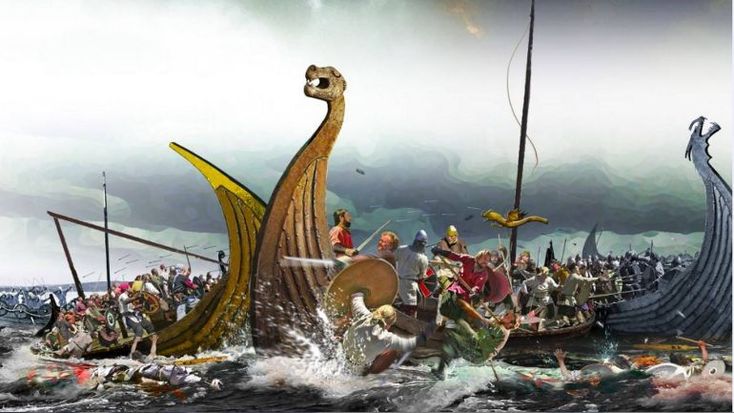The Vikings were known for their skill in crafting clothing and other textiles, using materials that were readily available to them in their environment. From sheep wool to flax, the Vikings made use of a wide variety of natural resources to create practical and durable garments that kept them warm and protected in the harsh Scandinavian climate. In this blog post, we'll take a closer look at the process of Viking clothing production and the materials they used.
The Process of Viking Clothing Production
The first step in Viking clothing production was to obtain the materials needed. Wool was the most commonly used material for clothing, as it was warm and durable. The Vikings would shear their sheep in the spring or fall and then clean the wool to remove dirt and debris. Once the wool was cleaned, it was carded to straighten out the fibers and remove any remaining debris.
After the wool was carded, it was spun into thread using a drop spindle or a spinning wheel. The Vikings used a variety of spinning techniques, including the "suspended spindle" method, where the spindle is hung from a cord and spun in the air, and the "supported spindle" method, where the spindle is supported on a surface while being spun.
Once the thread was spun, it was then woven into fabric on a loom. The Vikings used two types of looms: the warp-weighted loom, which was used for weaving narrow pieces of fabric such as belts and straps, and the horizontal loom, which was used for wider pieces of fabric such as clothing.
The final step in the clothing production process was to sew the pieces of fabric together to create a garment. The Vikings used a variety of stitching techniques, including the "overcast" stitch, where the edge of the fabric is folded over and stitched down to prevent fraying, and the "running" stitch, where the needle is passed in and out of the fabric in a straight line.

Materials Used in Viking Clothing Production
In addition to wool, the Vikings also used a variety of other materials to create their clothing. Flax was used to make linen, which was lighter and cooler than wool and was often worn in the summer. Leather was also used to make shoes, belts, and other accessories, while fur was used to line clothing and provide extra warmth.
Conclusion
The Vikings' skill in crafting clothing and textiles was an important part of their culture and way of life. By using materials that were readily available to them and applying techniques that had been passed down through generations, the Vikings were able to create practical and durable clothing that kept them warm and protected in the harsh Scandinavian climate. The art of Viking clothing production remains an inspiration to this day, as we continue to value and appreciate the importance of sustainable and traditional crafting techniques.
Sources:
- Barrett, James H. "Textiles, Cordage and Raw Fiber." In The Oxford Handbook of the Archaeology of Clothing and Textiles, edited by Louise M. Beck and Philippa M. Walton, 113-128. Oxford University Press, 2015.
- Price, Neil. The Viking World. Routledge, 2008.
- Roesdahl, Else. The Vikings. Penguin Books, 1998.




Leave a comment
This site is protected by hCaptcha and the hCaptcha Privacy Policy and Terms of Service apply.